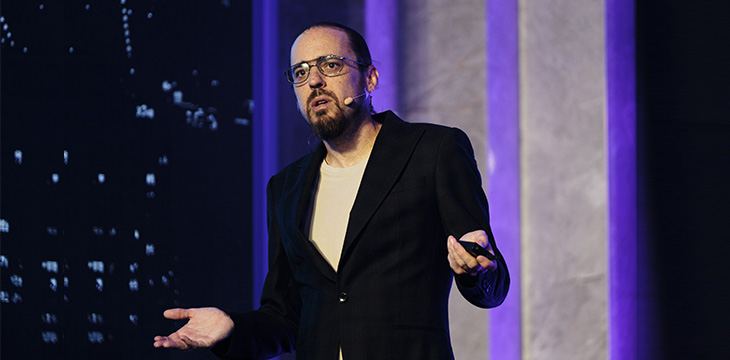
|
Getting your Trinity Audio player ready... |
There’s now less than one month to go until Bitcoin’s Genesis upgrade. Arguably the most significant upgrade to the network in its history, the mandatory hard-fork will vastly increase Bitcoin’s capabilities to make it stable and functional enough for global enterprise use on any scale. In this first of a series of Q&A videos, Bitcoin SV Node Project Technical Director Steve Shadders explains some of the testing process.
This comes as the team released its second version of the Genesis software beta. The final and official release is scheduled for February 4.
The @BitcoinSVNode team has just released the 2nd version of the software beta for the #Genesis Hard Fork. Testers are encouraged to upgrade to this version of the software. Read more and download it here: https://t.co/hZO7NR9c1h #BSV #Bitcoin pic.twitter.com/B6GiIJ9dq7
— BSV Association (@BSV_Assn) January 6, 2020
Shadders prefers the term “protocol upgrade” to “hard fork upgrade.” Although running Genesis is compulsory for any miner who wishes to stay on the Bitcoin network, the term “hard fork” has in recent years developed associations with contentious upgrades. That’s not an issue for Genesis, since a consensus of Bitcoin SV miners support the change.
This is it: 2020 is Bitcoin’s big year
2020 is Bitcoin SV’s big year. Shadders calls 2019 “just the tip of the iceberg” as BSV found its feet, leaving behind the old BTC with its severely limited transaction capacity and segregated witness signatures—and their associated technical and legal issues. Post-Genesis, Bitcoin will become something far greater than it has been until now.
Genesis restores Bitcoin’s original functionality, while setting the stage for massive expansion. Satoshi Nakamoto‘s original vision was a network that far surpassed a static “digital gold” type asset or simple payments. It was something far grander: a network on which people could build an entirely new economy, with transaction throughput to rival any existing payments network and the ability to perform complex functions like tokenization, smart contracts, timelocked payments, the Metanet, and many more yet to be invented.
To do this, protocol developers had to remove any data size limit to transactions (miners will be able to set their own depending on capacity) and increase the mathematical capabilities of Bitcoin’s Script language. Programmers will be able to be far more creative with what they include in transaction data and everyone will have access to advanced functionality without having to negotiate with miners first.
“I think we’ll see explosive growth not just in terms of the amount of activity that’s going on, but in the breadth of types of activity that we’ll be seeing,” Shadders said.
The Bitcoin SV Node team also had to make the protocol stable, by “locking it down” once the upgrade is done. This is essential to appeal to enterprise users, who would never build serious businesses on a technical protocol that could change at any time, or according to special interest whims of protocol developers.
“When I talk to large enterprises, that’s music to their ears,” he added.
Genesis is the last such significant upgrade to Bitcoin, though there may be another one later to fix any issues that arise. Shadders describes it as “probably the second last” hard fork upgrade. After that, Bitcoin’s protocol will be (as the popular phrase goes) “set in stone” and the future can begin.
How testnets will make the upgrade a smooth one
Shadders’ team is doing everything it can to make the transition a smooth one, with rigorous testing before the official release on February 4.
In this video, he describes the role of the Scaling Testnet (STN) and Genesis testnets. The STN tests capacity, which is now approaching 1,000 transactions per second. Shadders says this is within striking distance of Visa’s payment network, and is also a vast improvement on what the Bitcoin testnet could do just 12 months ago.
The STN is an approximation to the mainnet that’s as close as possible to the real thing. The coins are even mined, though have no economic value. “It’s Monopoly money that occasionally people think is real,” Shadders said.
There are two others: the Genesis testnet already has the upgraded changes running, while the Genesis Reset testnet runs on a 48-hour cycle, imitating conditions 24 hours before and after the upgrade, then resetting itself, to test any issues that could occur during the upgrade process itself.
The Bitcoin SV Node team published the complete technical specification for Genesis in late December 2019. Shadders invited anyone interested in participating to contact the team via the BitcoinSV.io page, and join its discussion group on Telegram.
The Q&A video series with Steve Shadders will continue over the coming weeks, to explain all important aspects of the Genesis upgrade and what it means. Stay tuned.

 11-22-2024
11-22-2024


